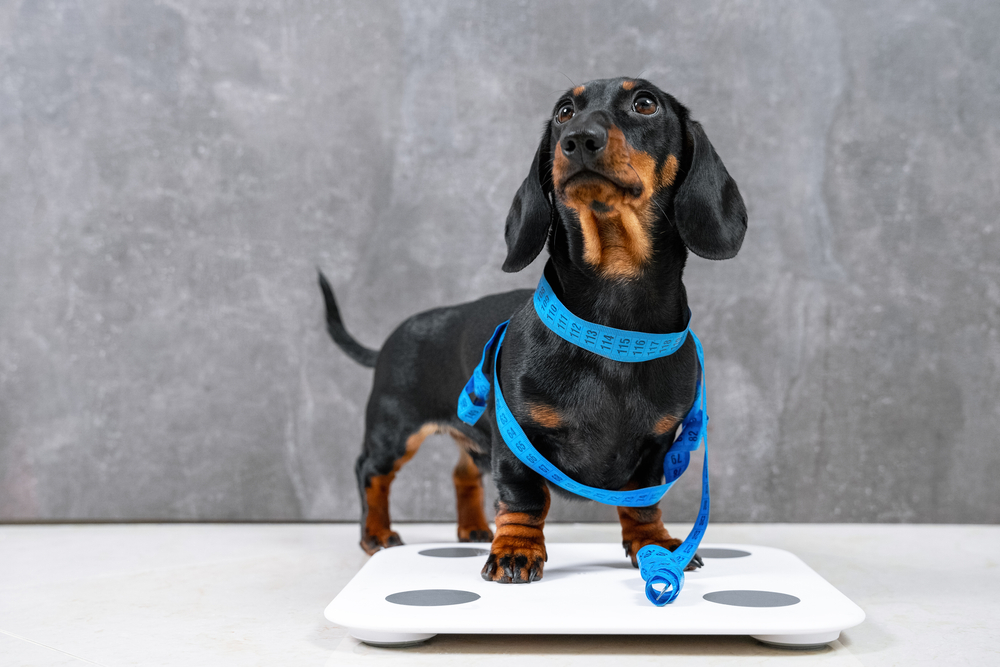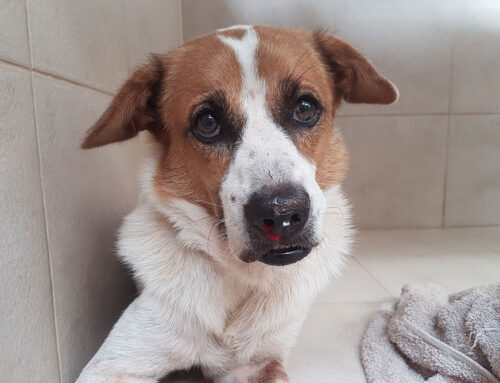Pet weight issues and obesity are at an all-time high. And, as the scale number increases, so does the number of North Waterloo Veterinary Hospital patients presenting with weight-related challenges and life-altering health disorders. Pet obesity’s impact on the companion animal population is devastating—yet completely preventable. Take an honest look at your pet’s condition and take action, and you will reverse weight’s harmful toll on your pet’s health and longevity.
Pet obesity: An overview
Pet obesity is the most significant nutrition-related health issue affecting today’s pets. According to some sources, this surge in overweight dogs and cats is caused in part by the modern pet’s sedentary indoor lifestyle and inappropriate diet (e.g., excessive carbohydrate or fat content and a too-generous amount of commercial pet treats and table scraps). Pets are considered overweight when they weigh 10% more than their ideal body weight, and obese when they weigh 20% or more of their ideal weight.
If you’re unsure about your pet’s weight, use a body condition score chart to assess their physical condition. Then, consult your North Waterloo Veterinary Hospital veterinarian to determine an ideal weight for your pet.
Risk factors that contribute to pet obesity
Although excessive calorie intake and insufficient exercise are often to blame, other factors—inherited and acquired—can increase a pet’s overweight risk, including:
- Spaying and neutering — Altered pets have a reduced metabolism and are susceptible to weight gain if their diet is not adjusted. However, this risk is easily mitigated by reducing the pet’s daily calories.
- Health conditions or injuries — Pain and illness can alter a pet’s physical ability and lead to a more sedentary lifestyle.
Stress and anxiety — If food is readily available, stressed or anxious pets may eat out of boredom or as a coping mechanism. - Breed — Small- and toy-breed dogs are often exercised less than larger dogs, and given more table scraps. Basset hounds, beagles, dachshunds, Labrador retrievers, golden retrievers, pugs, English bulldogs, schnauzers, and cocker spaniels are also at-risk breeds.
Pet obesity-related health problems
Excessive weight is much more than an aesthetic concern. Unnecessary body fat creates a harmful internal environment and makes pets susceptible to serious health issues, including:
- Cancer
- Arthritis
- Kidney disease
- Orthopedic disease (e.g., hip dysplasia, cruciate ligament rupture)
- Cardiovascular problems
- High blood pressure
- Diabetes
- Compromised immunity
- Delayed healing
- Heat stroke
Sadly, these conditions and their complications often contribute to an early death. According to one analysis, overweight pets lived 2½ years less on average compared with their healthy weight counterparts. This alarming and unsettling data should hit home for all pet lovers, and spur action for change.
Help for your overweight pet

Your pet’s fight against pet obesity starts with a visit to North Waterloo Veterinary Hospital. Our veterinary team will assess their overall health, looking for medical causes (e.g., endocrine or autoimmune dysfunction) for your pet’s weight gain and underlying conditions that may complicate weight loss. Then, we’ll customize a plan to promote safe and effective weight loss that will include:
- Goal setting — Once we determine your pet’s ideal weight, we’ll break down their weight loss journey into smaller goals. As a general rule, dogs can safely lose 1% to 3% of their body weight per month, and may lose 3% to 5%, while safe weight loss for cats ranges between 0.5% to 2% per month. As with human weight loss, setting and reaching small goals can help you feel successful and make you more likely to stick with your pet’s plan. We’ll schedule monthly check-ins—in-person or by phone, email, or video chat—to ensure steady progress.
- Nutritional counseling — Based on your pet’s preferences and health needs, your veterinarian will recommend one or more nutritionally dense pet foods formulated for weight loss. Unlike over-the-counter foods, which often replace nutrition with fillers to help dieting pets feel satisfied, veterinary weight loss diets feature enhanced palatability, balanced nutrition from high-quality proteins, and slow-burning complex carbohydrates to provide steady energy and help pets feel full.
- Low-impact exercise ideas — Overweight pets need a controlled exercise introduction that considers their compromised joints and cardiovascular health. Dogs can start with brisk-paced leash walking for 5 to 20 minutes initially, depending on their physical condition. For example, if your dog gets winded walking to the mailbox, start there, with the plan to walk to the mailbox and back two to three times per day, until they are no longer fatigued.
Cats do not naturally perform duration-based exercises and instead rely on quick explosive energy followed by a prolonged rest. Try encouraging your cat’s natural predatory behaviors with laser pointers and motion-activated toys, always ending the session before your cat gets bored or tired (e.g., only a few minutes) so they’ll be interested next time. A few sessions per day with rotated toys will often prevent boredom.
- New mindset, better relationship — We encourage pet owners to reframe their pet’s weight loss journey as an opportunity to strengthen their emotional bond. This can include replacing your pet’s food dish with a puzzle toy to encourage physical activity and curiosity, taking a training class together, or setting shared fitness goals, such as completing a full lap around the local park without stopping, training for a 5-kilometer run, or achieving new daily step totals—yes, there are fitness trackers for pets!
As your pet loses weight, they’ll add years to their life and you will experience more shared moments. Are you ready to help your overweight pet live a longer and healthier life? Contact North Waterloo Veterinary Hospital to schedule your pet’s weight loss consultation.







Leave A Comment